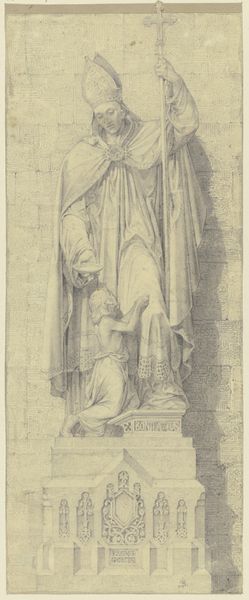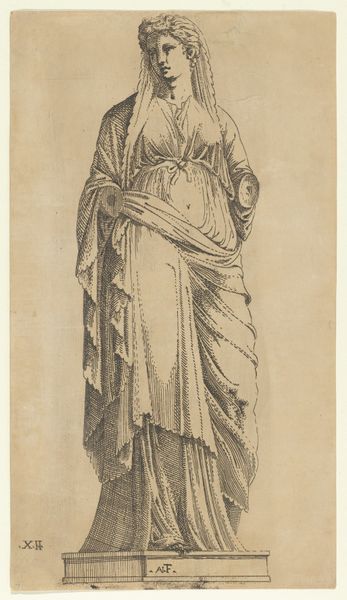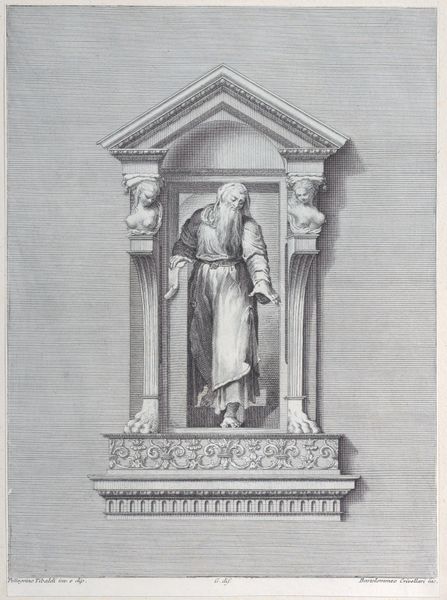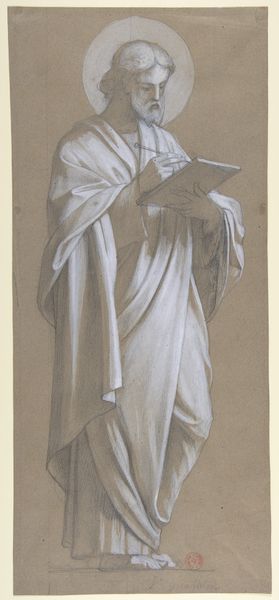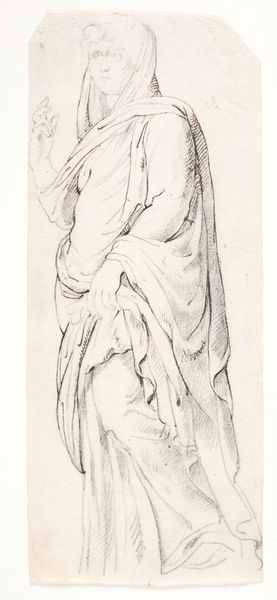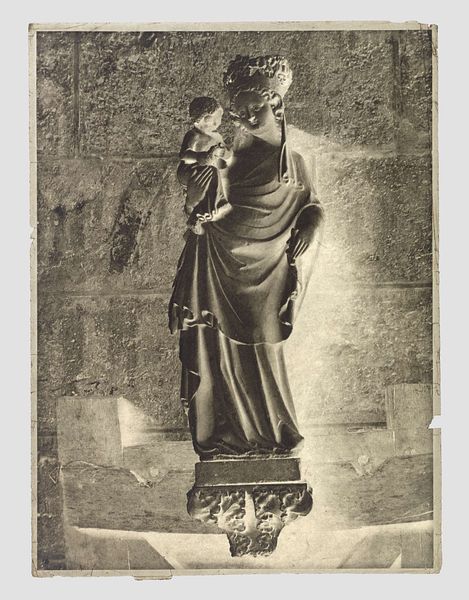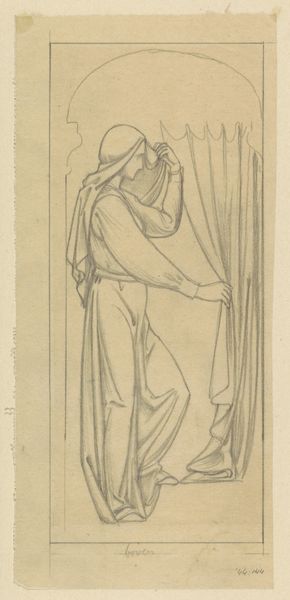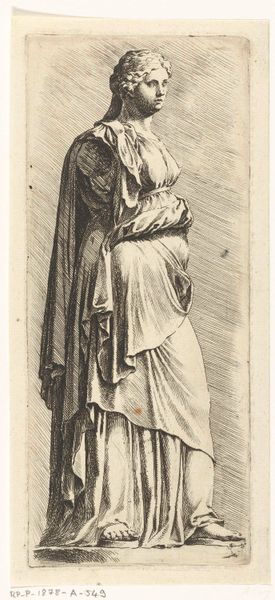
drawing, pencil
#
portrait
#
pencil drawn
#
drawing
#
16_19th-century
#
pencil sketch
#
figuration
#
german
#
pencil
#
history-painting
#
academic-art
#
realism
Copyright: Public Domain
Curator: Let's consider this intricate pencil drawing of the Statue des Heiligen Willigis. It comes to us from the hand of Johann Baptist Scholl the Younger and is held here at the Städel Museum. Editor: The statue looms up out of the stone, solemn and a little forbidding, but maybe it's just the unforgiving medium. The shading gives it this kind of haunting monumentality. Curator: Indeed. The medium emphasizes the linearity, inviting us to appreciate the delicate hatching that defines the figure’s drapery and beard. We also cannot ignore how this intricate system is employed to show Willigis bearing the model of a cathedral, reinforcing his legacy. Editor: Right, that tiny cathedral… it almost feels fragile, a fleeting dream balanced against this guy’s really severe gaze. I'm wondering how much this academic style softens or sharpens the statement. It feels historical but oddly immediate because we're basically staring at a sketch. Curator: We should understand, as well, how the artist situates Willigis—as if installed directly onto a masonry exterior—to give us a clear understanding of the architectural framing. It’s very deliberate. The texture and tones are used to create what might read as a highly realist figuration in its time. Editor: Is it successful? The bottom of the image with its dedication, along with the stone-work background and the way the artist attempts the folds of his clothing... It feels precise but loses dynamism in the details. I mean, for all this emphasis, does he come to life? I find the precision draining, you know? Curator: Yet consider its merit as a preliminary drawing for a more monumental work, and this emphasis on precision could translate into grandeur and clarity. Its artistic ambition makes the statue much more interesting through that formal execution and close consideration. Editor: Hmm, I appreciate it as an early glimpse into this kind of project—like peeking behind the curtain. So much preparation gets plowed into a single project we might now walk past. Curator: Exactly! What a rewarding dialogue between this work’s conceptual forethought and its material presentation, isn’t it? Editor: Absolutely. Who knew a sketch could speak so loudly of devotion and the weight of, well, cathedrals?
Comments
No comments
Be the first to comment and join the conversation on the ultimate creative platform.
